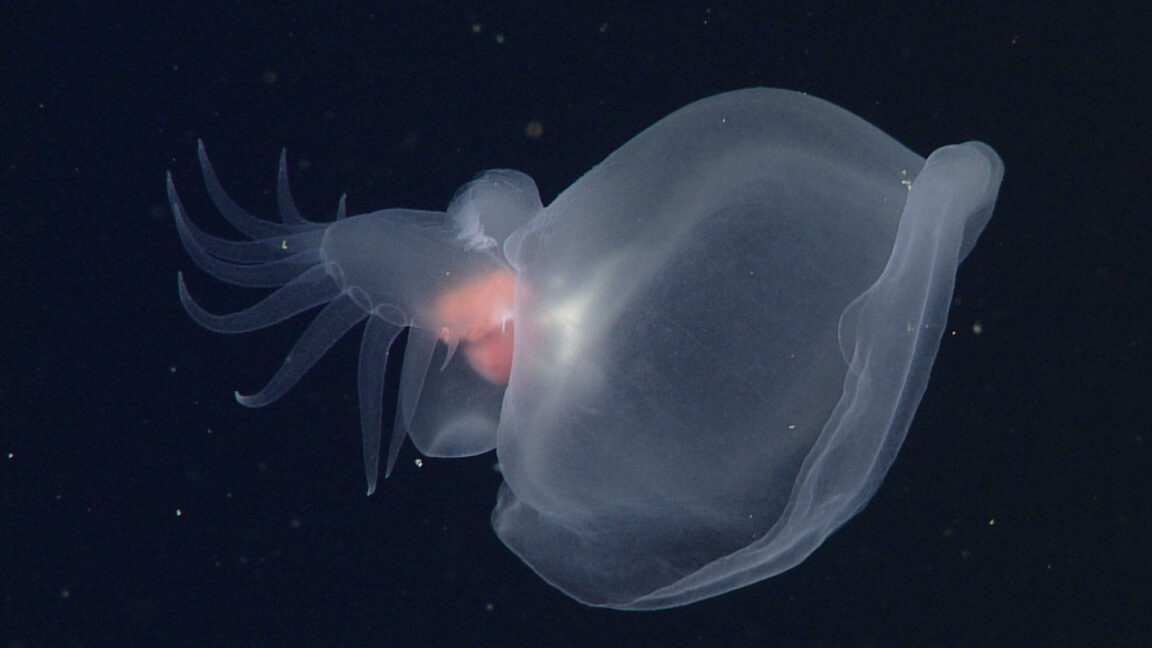
Some of the most bizarre lifeforms on Earth lurk in the deeper realms of the ocean. There was so little known about one of these creatures that it took 20 years just to figure out what exactly it was. Things only got weirder from there.
The organism’s distinctive, glowing presence was observed by multiple deep-sea missions between 2000 to 2021 but was simply referred to as “mystery mollusk.” A team of Monterey Bay Aquarium Research Institute (MBARI) researchers has now reviewed extensive footage of past mystery mollusk sightings and used MBARI’s remotely operated vehicles (ROVs) to observe it and collect samples. They’ve given it a name and have finally confirmed that it is a nudibranch—the first and only nudibranch known to live at such depths.
Bathydevius caudactylus, as this nudibranch is now called, lives 1,000–4,000 meters (3,300–13,100 feet) deep in the ocean’s bathypelagic or midnight zone. It moves like a jellyfish, eats like a Venus flytrap, and is bioluminescent, and its genes are distinct enough for it to be classified as the first member of a new phylogenetic family.
“Anatomy, diet, behavior, bioluminescence, and habitat distinguish this surprising nudibranch from all previously described species, and genetic evidence supports its placement in a new family,” the MBARI research team said in a study recently published in Deep Sea Research.
Is that a…?
Nudibranchs are gastropods, which literally translates to “stomach foot” since the “foot” they crawl around on when not swimming is right below their guts. They are part of a larger group that includes terrestrial and aquatic snails and slugs. B. caudactylus, however, seems to get around more like a jellyfish than a sea slug. It mostly swims using an oral hood that opens and closes to propel itself backward through the water in a manner similar to many jellyfish.
The hood of B. caudactylus can also act something like a Venus flytrap. While it is not a hinged structure like the leaves of the plant, it is used to trap prey. Typically small crustaceans, the prey are then pushed to the mouth at the back of the hood.
The nudibranch also seems to have a unique way of avoiding becoming food itself. Projections at the end of its tail, known as dactyls, can detach if needed, much like the tails of some lizard species. The MBARI team thinks that these dactyls are possibly a lure meant to trick predators while the nudibranch swims away. They later regenerate.

